I was in France for a couple of weeks before the Integrated Rail Plan was launched, so I thought it might be instructive to have a look at how Public Transport works over the Channel.
High Speed Rail
We spent some time in Arcachon, a seaside small town on the Atlantic coast near Bordeaux, where I noted that if I wanted to I could catch the 05:45 TGV service to Paris and arrive at 08:45, in time for a morning meeting or a day’s work – a distance of 646kms. We were in Bordeaux on Sunday evening and noted 3 trains leaving for Paris at the end of a holiday weekend within 30 minutes, each doubled-up TGV units and full – nearly 1,000 passengers per train.
ER train from Arcachon to Bordeaux
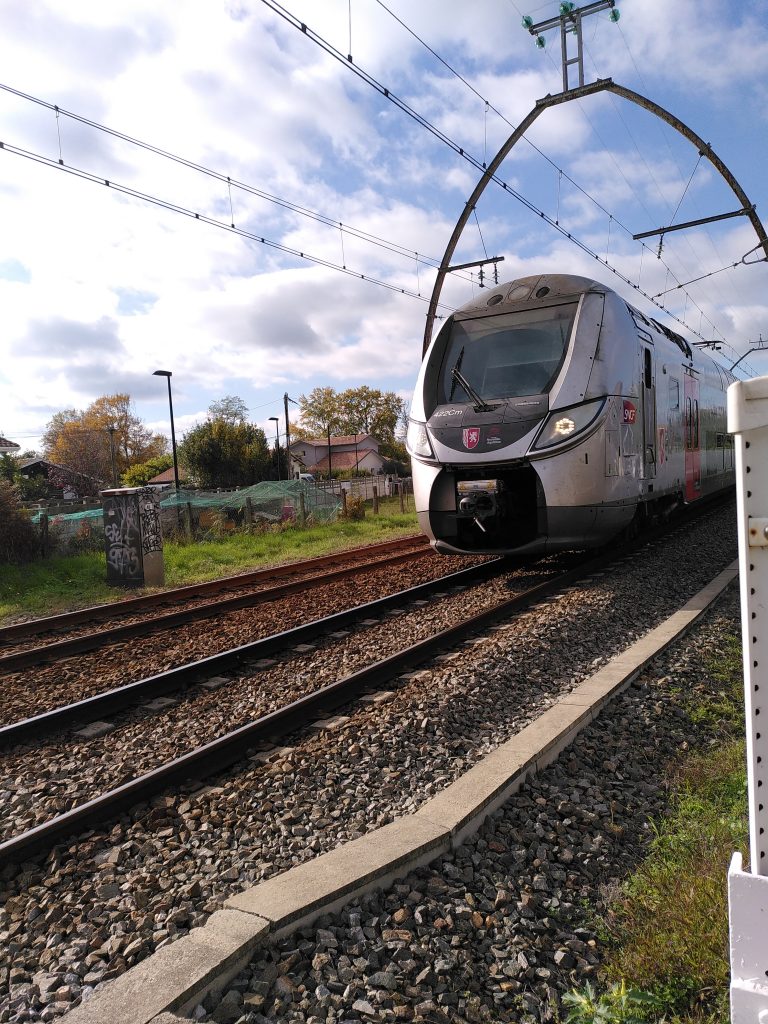
We took the direct TGV from Bordeaux to Brussels, avoiding Paris and changing at Lille for the Eurostar. France is now banning internal flights on many routes because there is no need for this wasteful high-carbon mode of travel. When we got back to the UK we had the choice of a diesel train taking over 2 hours to cover the 165 miles to Sheffield, or a cheaper journey on an electric train, changing at Doncaster. Britain’s failure to invest in rail has left us as a backward-facing, parochial laughing stock in Europe (although the people we met were far too polite to say so) and the HS2 debacle risks making matters worse.
Local transport in Pau
Pau is a smallish city in the Pyrenees region of France (but not in the mountains themselves) having a city population of about 85,000, and a regional population of 200k – so about half the size of Sheffield.
The city centre has a transport problem that is by no means unique to Pau. The station is at the bottom of the valley, with rivers running beside and underneath, and there is a steep climb up to the city centre. Sound familiar? So what has Pau done about it? Well, there’s a free funicular railway – it carries bikes of course, and is used by .5m people per year.
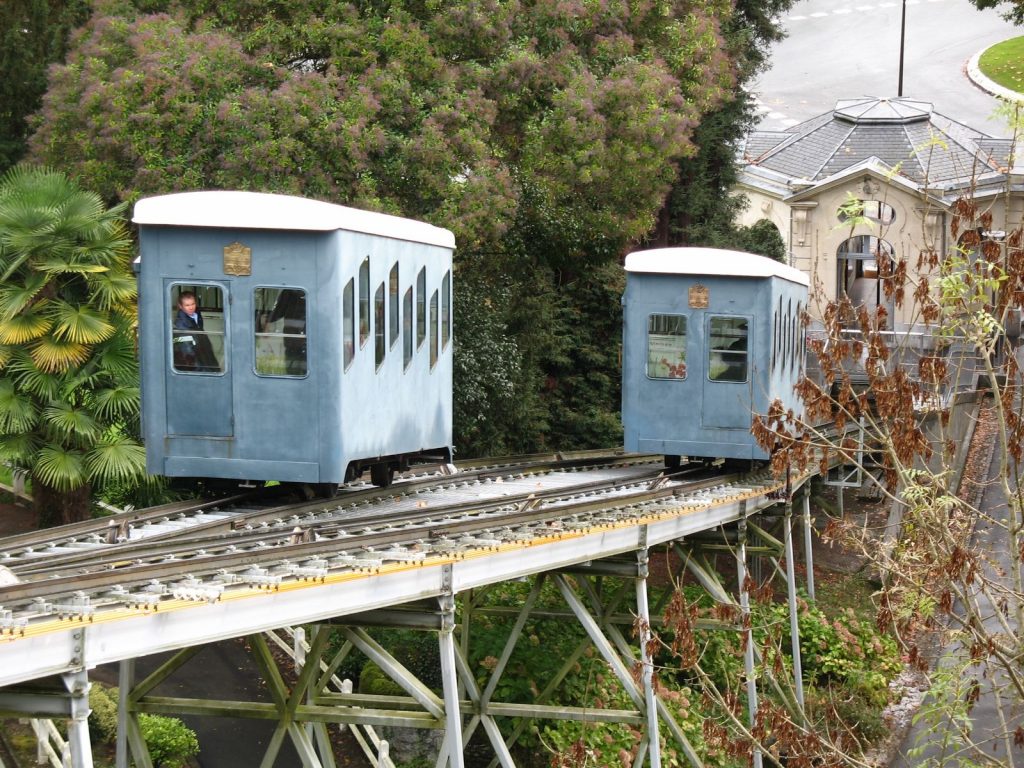
Once you are in the City Centre, the jolie free electric Navette bus will get you around.
Bikes, electric and normal, are very much in evidence including La Poste’s fleet of E-cargo bikes, – they have at least 5,000 and Project Management types will be interested to learn that they use Lean/Six Sigma to maintain them. Where are the UK Post Office e-bikes?
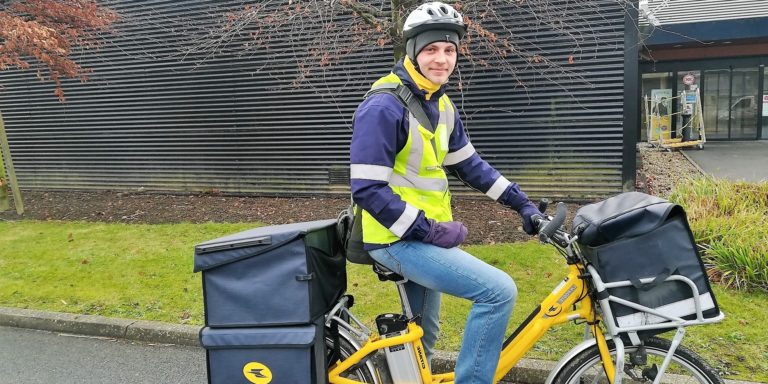
Motor traffic is severely limited and the centre is a thriving, very pleasant place to stroll about, find a cafe, bar or restaurant, etc.
Voie Vertes (Greenways)
France has embarked on a programme of converting disused railway lines into Greenways.
One such runs from Lourdes past Argelès-Gazost to Sonome, where bike paths and quieter roads take you up into the High Pyrenees and the famous cols. The path is surfaced with tarmac and has three types of access control in place:-
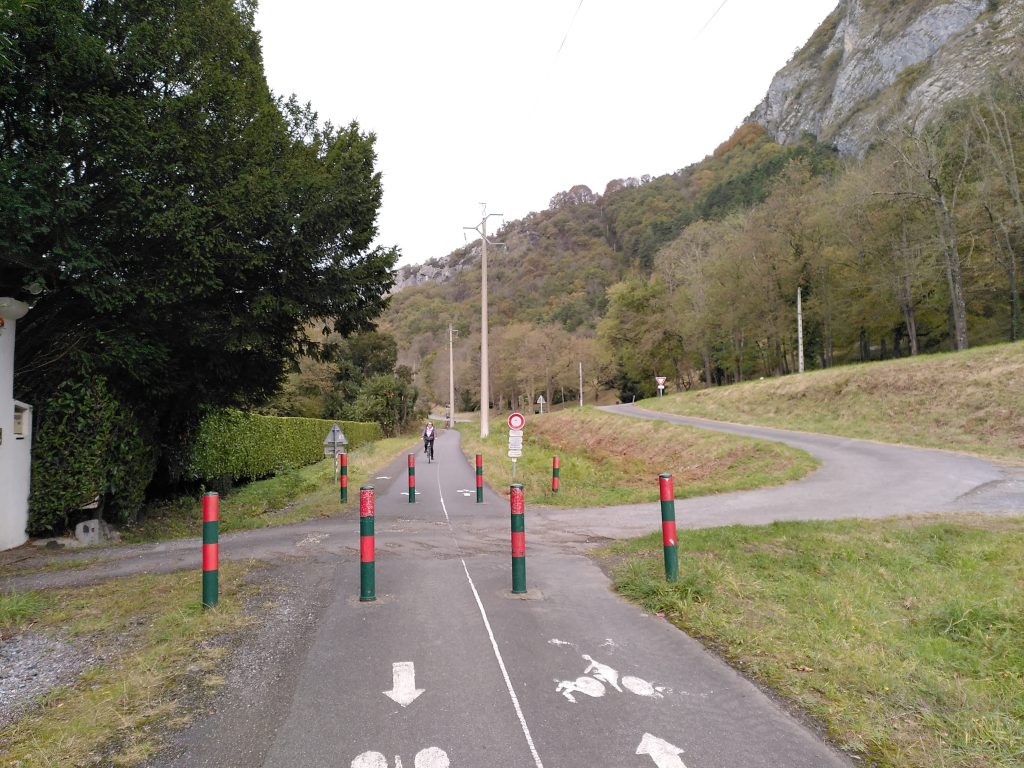
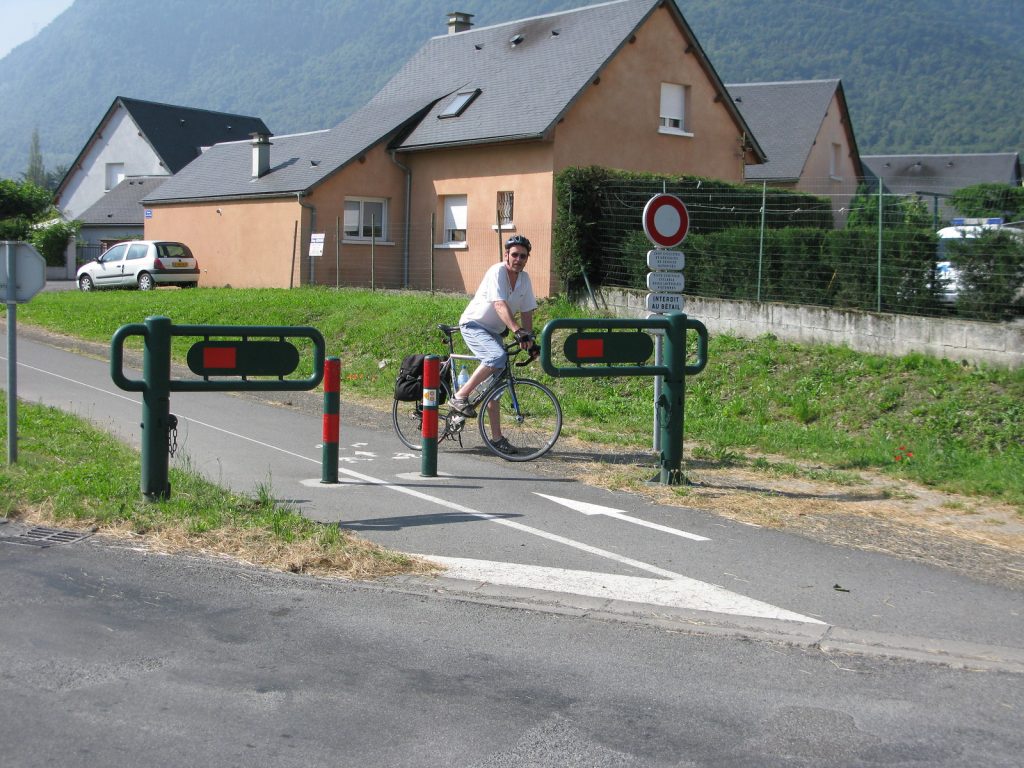

All of these seem intended only to slow cyclists down or prepare walkers when there is a road to cross. They wouldn’t keep a motorcyclist out and indeed we saw no motorcyclists on the trail – it doesn’t seem to occur to French motorcyclists to try to use them! We did see La Poste on their e-cargo bikes – great for getting around this mountainous area.
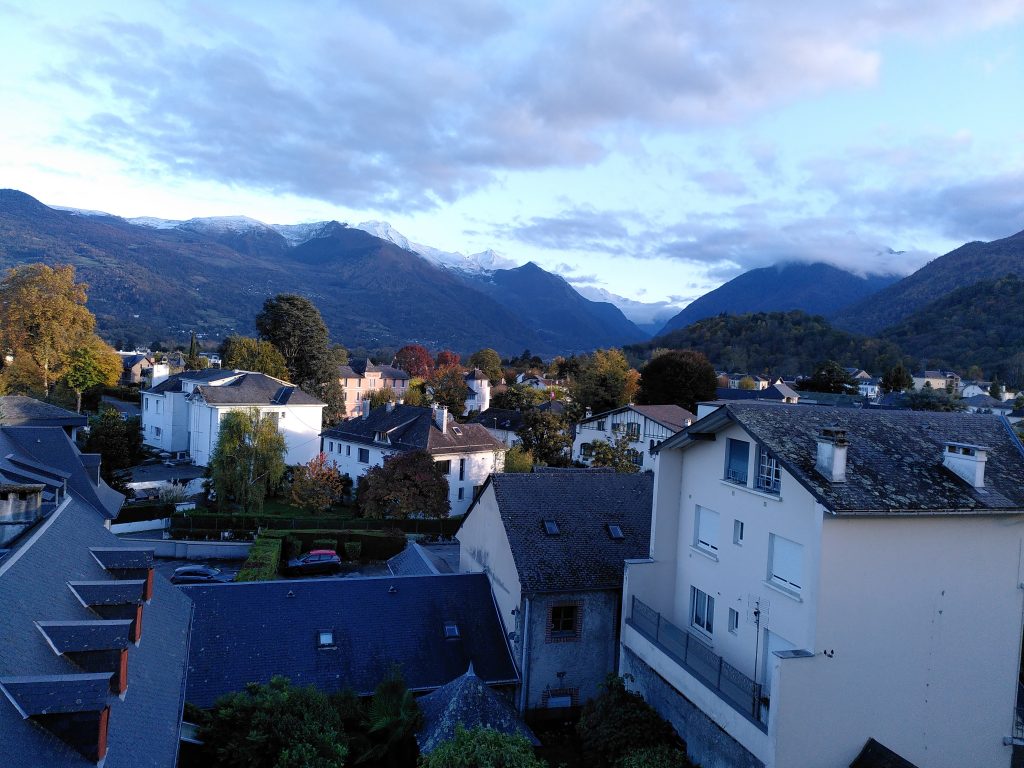
COVID Precautions
France has kept some COVID Restrictions in place. Masks are obligatory on Public Transport and you need a Covid passport, showing that you have been vaccinated twice, to enter restaurants, bars, museums etc. Consequently, as over-65s we felt much safer going into these places and using public transport. The rules were generally adhered to but less so in the quieter town we visited where we felt less at risk anyway. Coming back to the UK it feels like the Wild West where people are completely reckless with their health and that of others. All you can do is get your booster jab and hope for the best!